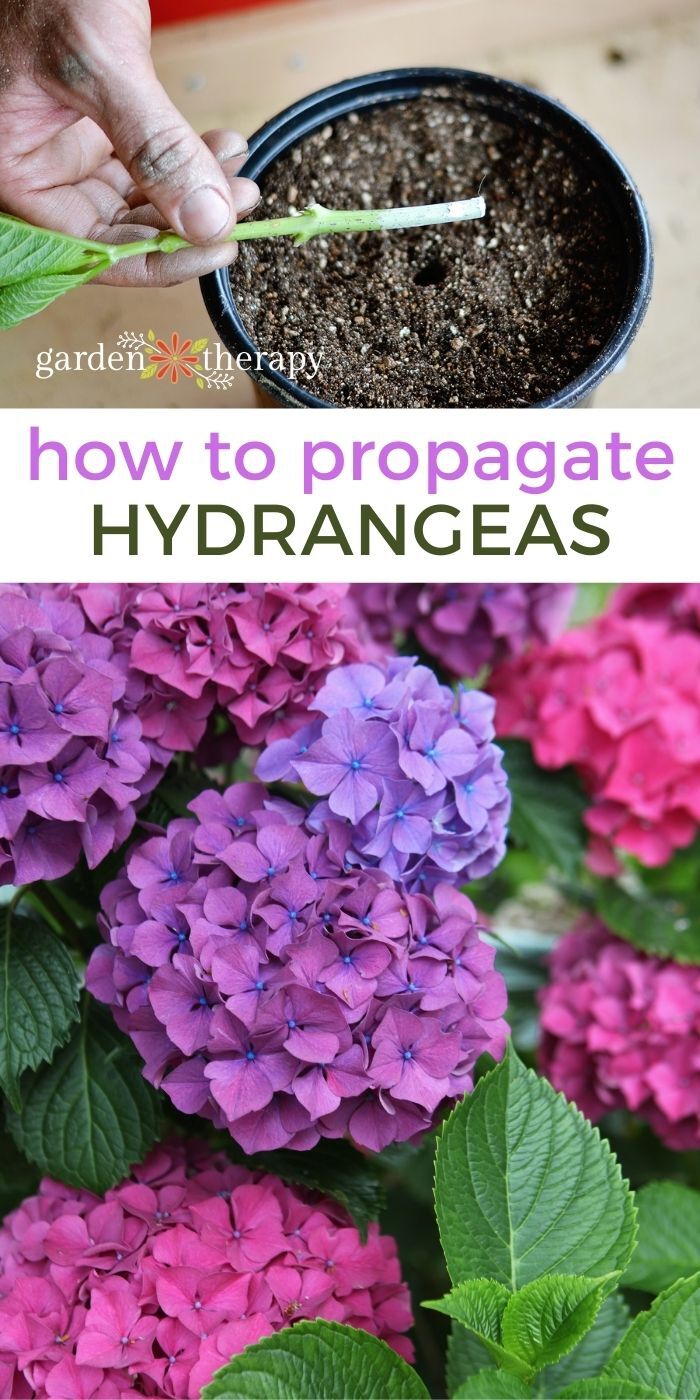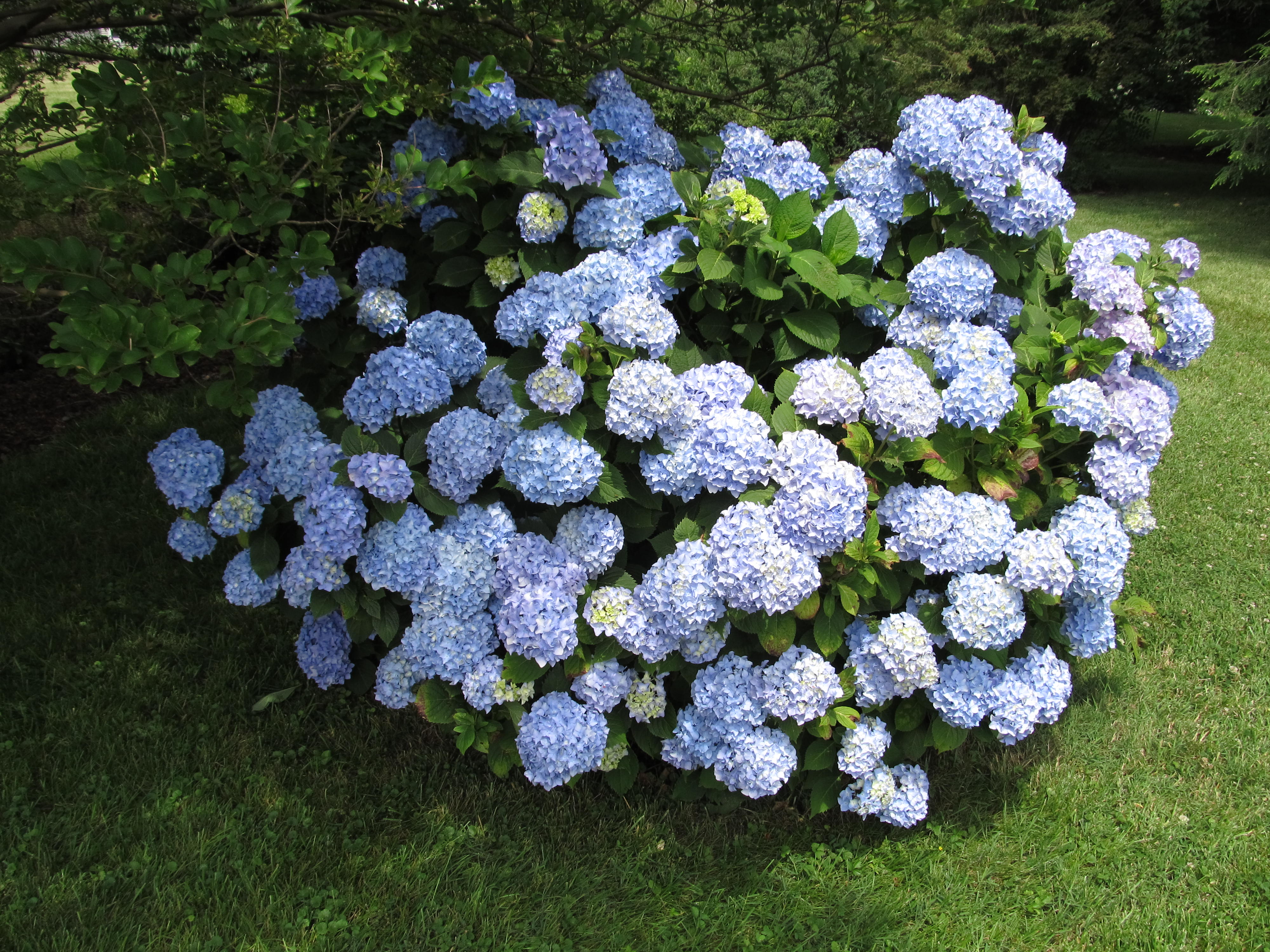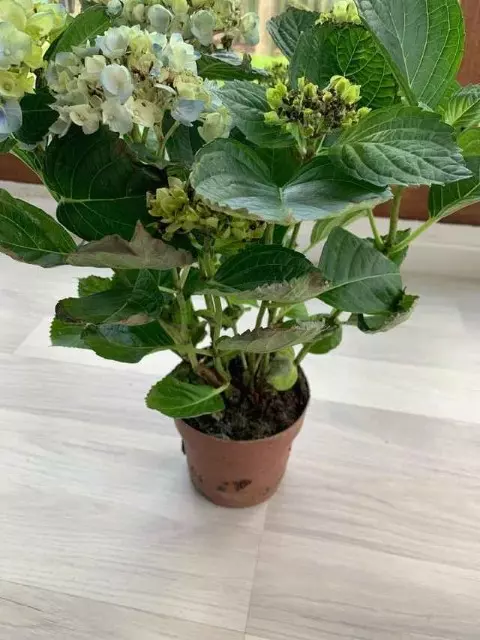Unveiling the Beauty of Hydrangeas: An Overview
Hydrangeas are a beloved addition to gardens and landscapes, captivating admirers with their exquisite flowers and easy-care nature. These ornamental plants belong to the Hydrangeaceae family and encompass over 70 species, each with unique characteristics and growing conditions. The versatility of hydrangeas allows them to thrive in various environments, making them a popular choice for garden enthusiasts around the world.
Soil Preparation: The Key to Hydrangea Happiness
Hydrangeas thrive in well-draining, nutrient-rich soil that supports their growth and flowering. To create the ideal soil conditions for your hydrangeas, consider the following tips:
- Test your soil pH: Hydrangeas prefer slightly acidic to neutral soil, with a pH range of 5.5 to 7.0. You can purchase a soil test kit or send a sample to a local extension service to determine your soil’s pH level. If your soil is too alkaline, you can lower the pH by adding elemental sulfur, aluminum sulfate, or organic matter such as peat moss or pine needles.
- Improve soil structure: Hydrangeas benefit from loamy or sandy loam soil that retains moisture while allowing excess water to drain away. To improve soil structure, mix in organic matter such as compost, well-rotted manure, or leaf mold. This will help create a well-draining, aerated soil that encourages root growth and flowering.
- Avoid heavy clay soils: Hydrangeas generally struggle in heavy clay soils, which can become waterlogged and hinder root development. If your soil is predominantly clay, consider growing hydrangeas in raised beds or containers filled with a high-quality potting mix.
How to Plant Hydrangeas: A Step-by-Step Guide
Planting hydrangeas correctly sets the stage for their future growth and flowering. Follow these steps to ensure successful establishment:
- Select the right location: Hydrangeas prefer partial shade, particularly in hot climates. Choose a location that receives morning sun and afternoon shade or dappled shade throughout the day. Avoid planting in full sun, as this can lead to scorched leaves and reduced flowering.
- Dig the planting hole: Choose a well-draining site and dig a hole that is approximately twice the width and depth of the hydrangea’s root ball. Roughen the sides of the hole with a fork or trowel to encourage root penetration.
- Prepare the plant: Remove the hydrangea from its container and gently loosen the roots, especially if they are tightly bound or circling the root ball. This will help the roots establish more quickly in their new environment.
- Position the plant: Place the hydrangea in the center of the planting hole, ensuring that the top of the root ball is level with the surrounding soil. Avoid planting too deeply, as this can lead to root rot and other issues.
- Backfill the hole: Mix the removed soil with organic matter, such as compost or well-rotted manure, and use this mixture to fill in the planting hole around the hydrangea’s root ball. Firm the soil gently as you backfill to eliminate air pockets and ensure good contact between the roots and soil.
- Water thoroughly: After planting, water the hydrangea deeply to settle the soil and encourage root growth. Provide enough water to moisten the entire root zone without creating waterlogged conditions.
- Mulch around the base: Apply a 2- to 3-inch layer of organic mulch, such as shredded bark or wood chips, around the base of the hydrangea. This will help retain moisture, regulate soil temperature, and suppress weed growth.
Hydrangea Care: Nurturing Your Plants Through the Seasons
Proper care is essential for hydrangeas to thrive and reach their full potential. Here are some key aspects of hydrangea care throughout the year:
Watering
Hydrangeas require consistent moisture to flourish, especially during the growing season. Water your plants deeply and regularly, providing enough water to saturate the entire root zone. Aim for about 1 inch of water per week, adjusting for rainfall and soil conditions. Avoid overhead watering, as this can encourage fungal diseases. Instead, use a soaker hose or drip irrigation system to deliver water directly to the root zone.
Fertilizing
Fertilize hydrangeas in early spring, using a balanced, slow-release fertilizer. This will provide the necessary nutrients for healthy growth and blooming throughout the season. Avoid fertilizing after July, as this can promote new growth that may not have time to harden off before winter, increasing the risk of cold damage.
Pruning
Prune hydrangeas in late winter or early spring, just before new growth begins. Remove dead, damaged, or diseased wood, as well as any weak or spindly branches. For bigleaf and smooth hydrangeas, prune just above a pair of healthy buds. For panicle and oakleaf hydrangeas, prune back to the main branches or stems. Avoid pruning hydrangeas in fall, as this can encourage new growth that may not have time to harden off before winter.
Protecting from Extreme Temperatures
Hydrangeas are generally hardy plants, but they can be sensitive to extreme temperatures. In cold climates, protect your hydrangeas from harsh winter conditions by wrapping the plants with burlap or providing a layer of mulch around the base. In hot climates, provide shade and additional water to help your hydrangeas cope with the heat. Monitor plant health regularly and address any issues promptly to ensure your hydrangeas thrive in their environment.
Hydrangea Blooming: Encouraging Vibrant, Showy Flowers
Hydrangeas are prized for their large, colorful flowers, which can vary in hue from pink, blue, and purple to white. To promote abundant blooming and maintain the health of your hydrangeas, consider the following practices:
Deadheading
Deadheading, or the removal of spent flowers, can encourage new blooms and maintain a tidy appearance. To deadhead hydrangeas, simply snip off the faded flowers with sharp pruning shears, cutting just above a set of healthy leaves. Deadheading is typically performed throughout the blooming season, but stop a few months before the first expected frost to allow the plant to prepare for winter.
Pinching
Pinching is a technique used to control the size and shape of hydrangeas, as well as to promote bushier growth and more abundant blooming. To pinch a hydrangea, use your fingers or pruning shears to remove the soft, new growth at the tips of the branches. This should be done in late winter or early spring, just as new growth begins to emerge. Pinching encourages the plant to produce more side branches, which in turn produce more flowers.
Selecting the Right Cultivars
Choosing the right hydrangea cultivar for your climate is crucial for optimal blooming. Some varieties, such as bigleaf and smooth hydrangeas, are better suited to mild climates, while others, like panicle and oakleaf hydrangeas, can tolerate more extreme temperatures. Research the specific growing requirements and blooming habits of different hydrangea cultivars before making a selection. This will help ensure that your plants are well-suited to your local climate and will produce an abundance of blooms year after year.
Addressing Common Issues
Occasionally, hydrangeas may experience issues that affect their blooming. These can include poor soil conditions, insufficient water, or extreme temperatures. To address these issues, ensure that your hydrangeas are planted in well-draining, nutrient-rich soil, and water them consistently throughout the growing season. Protect your plants from extreme temperatures by providing shade or additional water during hot spells, and wrapping them with burlap or providing mulch during cold winters. Regularly monitor the health of your hydrangeas and address any issues promptly to encourage optimal blooming.
Popular Hydrangea Varieties: A Closer Look
Hydrangeas offer a diverse range of varieties, each with its own unique characteristics, growing conditions, and maintenance requirements. Here are a few of the most popular hydrangea varieties:
Bigleaf Hydrangea (Hydrangea macrophylla)
Bigleaf hydrangeas, also known as mophead or lacecap hydrangeas, are characterized by their large, round flower clusters. These hydrangeas prefer partial shade and rich, well-draining soil. They are sensitive to soil pH, with acidic soils producing blue flowers and alkaline soils producing pink flowers. Bigleaf hydrangeas require consistent moisture and should be protected from extreme temperatures.
Panicle Hydrangea (Hydrangea paniculata)
Panicle hydrangeas are known for their cone-shaped flower clusters, which can range in color from white to pink. These hydrangeas are more tolerant of full sun and a wider range of soil types than bigleaf hydrangeas. They are also more drought-tolerant and can be pruned more aggressively, making them a popular choice for hedges and privacy screens.
Oakleaf Hydrangea (Hydrangea quercifolia)
Oakleaf hydrangeas are characterized by their large, lobed leaves, which resemble those of oak trees. These hydrangeas prefer partial shade and well-draining soil. They are more tolerant of heat and humidity than other hydrangea varieties and produce large, pyramidal flower clusters that fade from white to pink as they age. Oakleaf hydrangeas also offer attractive fall foliage in shades of red, orange, and purple.
Smooth Hydrangea (Hydrangea arborescens)
Smooth hydrangeas, also known as snowball hydrangeas, are characterized by their large, round flower clusters, which can be up to 12 inches in diameter. These hydrangeas prefer partial shade and well-draining soil. They are more tolerant of cold temperatures than other hydrangea varieties and can be pruned back to the ground in late winter to encourage new growth and more abundant blooming.
Climbing Hydrangea (Hydrangea anomala petiolaris)
Climbing hydrangeas are a type of vine that can be trained to grow on trellises, arbors, or walls. They prefer partial shade and well-draining soil. Climbing hydrangeas can be slow to establish but produce large, lacecap flowers and attractive, exfoliating bark. They are more tolerant of dry soil than other hydrangea varieties and can be pruned after flowering to control their size and shape.
Designing with Hydrangeas: Incorporating Them into Your Garden
Hydrangeas are versatile plants that can be used in a variety of landscape designs to create stunning visual effects. Here are some tips for incorporating hydrangeas into your garden:
Plant Spacing
When planting hydrangeas, it is important to consider the mature size of the plant and provide enough space for it to grow. As a general rule, plant hydrangeas at least 3 to 5 feet apart, depending on the variety. This will allow for adequate air circulation and prevent overcrowding, which can lead to disease and reduced blooming.
Companion Planting
Hydrangeas can be paired with a variety of other plants to create attractive combinations. Consider planting hydrangeas with ferns, hostas, or astilbe for a woodland garden effect. For a more formal look, pair hydrangeas with boxwood, yew, or holly. In mixed borders, combine hydrangeas with perennials such as daylilies, coneflowers, or black-eyed Susans for a burst of color and texture.
Color Coordination
Hydrangeas offer a wide range of flower colors, from pink and blue to white and green. When designing your garden, consider the color scheme of your plants and how hydrangeas will fit in. For a monochromatic look, pair hydrangeas with other plants in shades of pink, blue, or white. For a more dramatic effect, combine hydrangeas with contrasting colors such as yellow, orange, or red.
Examples of Attractive Hydrangea Arrangements and Garden Styles
Hydrangeas can be used to create a variety of attractive arrangements and garden styles, including:
- Hedge: Plant hydrangeas in a row to create a formal, manicured hedge that provides privacy and structure to your garden.
- Cottage Garden: Combine hydrangeas with other cottage garden favorites such as roses, delphiniums, and foxgloves for a romantic, old-fashioned look.
- Container Garden: Plant hydrangeas in pots or containers to create a portable, versatile garden that can be moved around as needed.
- Cut Flower Garden: Grow hydrangeas specifically for cutting and arranging in vases or bouquets. Choose varieties with long-lasting flowers and cut them just as they begin to open.
Troubleshooting Common Hydrangea Issues: A Comprehensive Guide
Hydrangeas are generally easy to care for, but they can occasionally experience issues that affect their health and appearance. Here are some common hydrangea problems and solutions:
Pests
Hydrangeas can be susceptible to a variety of pests, including aphids, scale insects, and spider mites. These pests can cause damage to leaves, stems, and flowers, and can reduce the overall health of the plant. To control pests, use insecticidal soap or horticultural oil, or introduce beneficial insects such as ladybugs or lacewings. Keep the area around the hydrangeas clean and free of debris to prevent pest infestations.
Diseases
Hydrangeas can also be affected by various diseases, including powdery mildew, leaf spot, and root rot. These diseases can cause spots, discoloration, and wilting of leaves and flowers, and can weaken the plant. To prevent diseases, ensure good air circulation around the plants, water at the base of the plant rather than from above, and avoid overhead watering. If diseases are present, use fungicides or remove affected plant parts to prevent spread.
Cultural Issues
Cultural issues, such as poor soil, inadequate watering, and extreme temperatures, can also affect hydrangeas. To address these issues, ensure that the soil is well-draining and rich in organic matter, water consistently and deeply, and protect the plants from extreme temperatures. If cultural issues persist, consider amending the soil, adjusting watering schedules, or providing additional protection for the plants.
When to Seek Professional Assistance
If hydrangea problems persist despite attempts to address them, it may be necessary to seek professional assistance. Consult with a local extension service, horticulturist, or landscaping professional for advice on diagnosing and treating hydrangea issues. These experts can provide personalized recommendations based on the specific conditions and needs of your plants, and can help ensure the long-term health and success of your hydrangeas.


:max_bytes(150000):strip_icc()/summer-blooming-oakleaf-hydrangeas-2132724-09-128eb6d70f844a0c8f8eb984bea6c6d7.jpg)




